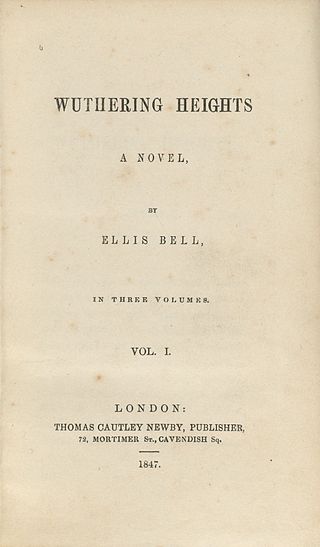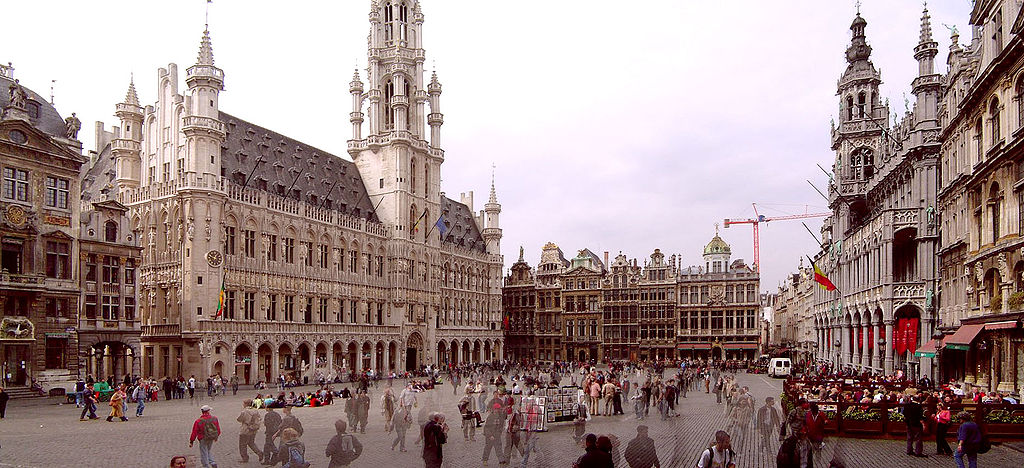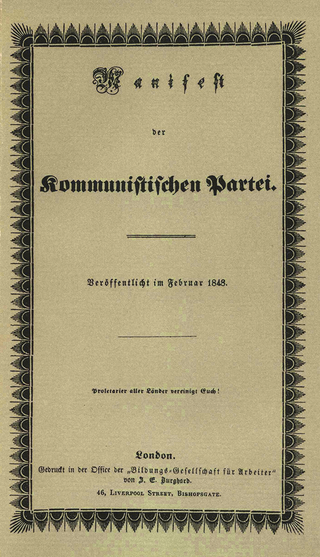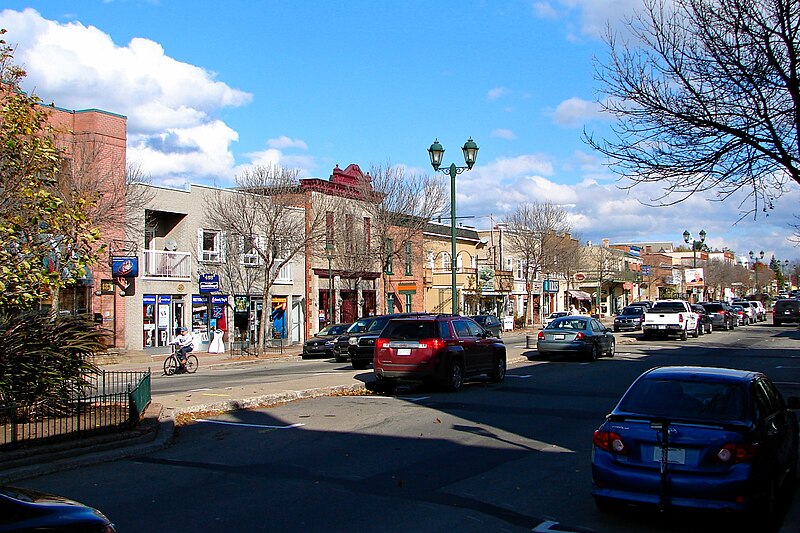Landschlacht, Switzerland, 19 December 2016
Time changes a place.
A place changes a person.
I think back to the little town of Lachute, Quebec, Canada, where I went to high school.
Many of the people I remember and much of what I knew is gone.
“Progress” has arrived in the form of shopping malls and fast food eateries that would have been unimaginable back in my days of yore.
Change is inevitable and what I knew as Home can never be returned to.
Consider another town: Haworth, West Yorkshire, England.

In the days of the Bronte sisters (1816 – 1855), Haworth was truly a toxic place and the death toll as regular as clockwork.

Above: Anne, Emily and Charlotte Bronte, painted by their brother Branwell (1834)
Haworth´s final resting place was also the cause of its necessity.
For the population of Haworth the wetness of their graveyard created huge problems.
The Haworth graveyard, drenched by rain running off the slopes, created a peaty bog or swamp.
Its cold, oxygen-free, clammy substance, akin to an American tar pit, is peculiarly preservative of the dead bodies it contains, but Haworth´s preservation of its dead destroyed the living.
It was estimated by the 1840s that 40,000+ corpses had been deposited in the graveyard, which had no drainage other than the run-off via the graves into the springs which fed the water pumps into the village – including the micro brewery Black Bull Pub.
One drank the dead in the Bull.
Haworth produced corpses as efficiently as the American Deep South produced cotton.
Haworth was the necropolis of northwest England.
(John Sutherland, The Brontesaurus)
And the Brontes lived and wrote and perished in this nexus of death.
Now fast forward to the 21st century.
In the small Yorkshire village of Haworth, where the Bronte sisters lived quietly with their clergyman father while penning some of the greatest novels in the English language, there are road signs in Japanese.
Walk down the stone-cobbled main street, which looks much as it did two centuries ago (minus the blood-stained phlegm of those with TB – which killed off Maria, Elizabeth, Branwell, Emily, Anne and Charlotte Bronte) and you can buy Bronte biscuits and Bronte gingerbread, Bronte fleeces and Bronte flagstones (for your Bronte-themed driveway).
You might then want to take refreshment at the Villette Coffee House (Villette is the name of one of Charlotte Bronte´s novels.), before stoking up on Bronte tea towels – just impossible to get in Osaka.

The Bronte Hairdressing Salon salvages some local pride by refusing to call itself Jane Hair (though at least two salons in neighbouring towns are guilty) and the Bronte Balti House is there for all your literary-themed curry needs.
(John Barlow, Everything but the Squeal)
Of English literary shrines, probably only Stratford upon Avon, (the birthplace of William Shakespeare, as well as where I met my wife), sees more visitors than the eight million who swarm annually into the village of Haworth (population: 6, 400), trudge up the hill from the train station, tramp the cobbles once trodden by the Bronte sisters, to pay their respects at the handsome parsonage where literary classics Jane Eyre and Wuthering Heights were penned.


The entire village is linked to Bronte tourism and overwhelms the visitor by the sheer amount of enterprises capitalising on the Bronte name.
But there are things apart from the Brontesaurus shadow that pique a visitor´s interest…
Haworth is twinned with Machu Picchu in Peru!

Every November one can watch Scroggling the Holly, when bands and Morris dancers lead a procession of children in Victorian costume following the Holly Queen up the cobblestones to a crowning ceremony on the St. Michael and All Saints´ Church steps.
The Holly Queen unlocks the Church gates to invite the Spirit of Christmas into Haworth.
Father Christmas arrives bringing glad tidings.
Every September the Haworth Arts Festival combines local professional and semi-professional musicians, artists and performers.
Every year the village hosts a 1940s weekend where the locals and visitors don wartime attire for a host of nostalgic events.
The aforementioned Haworth railway station is part of the Keighley and Worth Valley Railway, an authentic preserved steam railway, which runs along a five-mile stretch of track between Keighley and Oxenhope, stopping at Haworth en route.

The restored stations are a delight, with sections of the line branded into the memory of those who saw the film The Railway Children shot here in 1970.
(Kind of fitting to speak now of The Railway Children, as the story follows the adventures of the Waterbury children who are forced to move with their mother from a luxurious villa in outer London to Three Chimneys, a house near a Yorkshire railway, because their father, who works at the Foreign Office, has been imprisoned as a result of being wrongly accused of selling state secrets to the Russians…)

The village and its station have also featured in Yanks (starring Richard Gere and Vanessa Redgrave), Pink Floyd´s The Wall (starring Bob Geldof), Wild Child (starring Emma Roberts) and a number of BBC dramas.
I wonder if the Brontes would recognise the Haworth they once knew.
I suspect not.
If their biographers have described the Bronte family´s characters correctly, I have a feeling they would have loathed what Haworth has become and what was done in their name.
But what of the Brussels Charlotte once knew?

Above: The flag of Brussels
The Brussels I later experienced?
Of all that I saw and felt during my time in Brussels would she have recognised the place, the feelings?
As mentioned in an earlier blog (That Which Survives 2a: Teachers´ Travels – Welcome), Charlotte travelled to Brussels with her sister Emily.
They learned languages at the Héger Pensionnat (boarding school) and earned board and tuition by teaching English (Charlotte) and music (Emily).
The sisters´ time at the Pensionnat was cut short when their aunt Elisabeth Branwell died of uterine cancer in October 1842.
Charlotte returned alone to Brussels in January 1843 to take up a teaching post at the Pensionnat Héger, but her second stay in Belguim was not a happy one.
Charlotte became lonely and homesick and fell in love with Constantin Héger, a married man.
Charlotte was deeply affected by the events that transpired (and didn´t transpire) during her time in Brussels and these events would inspire her first novel The Professor and her last novel Villette.

I too was deeply affected by the events that transpired (and didn´t transpire) during my time in Brussels and they are what inspire this blog.
If The Professor and Villette are as autobiographical as is often suggested, Charlotte possibly travelled from Haworth via train to London, then by boat to Oostende, followed by a coach to Brussels.
I, a child of the late 20th century, flew from Montréal to Paris, then a bus to Brussels, but as fate would have it I would later reach England in the reverse manner Charlotte may have left it (Oostende – Margate – London – north).
“Reader, perhaps you were never in Belgium?
Perhaps you don´t know the physiognomy of the country?
You have not its lineaments defined upon your memory as I have them on mine?…
…Belgium!

Above: The flag of Belgium
Name unromantic and unpoetic, yet name that whenever uttered has in my ear a sound, in my heart an echo, such as no other assemblage of syllables, however sweet or classic, can produce.
Belgium!…
…It stirs my world of the past like a summons to resurrection.
The graves unclose, the dead are raised.
Thoughts, feelings, memories that slept are seen by me ascending from the clods, haloed most of them…”
(Charlotte Bronte, The Professor)
Rarely boastful, Belgium has in fact plenty to fascinate the visitor.
Everywhere there are wonderful bars and cafés where Belgians feel at home.
You´ll rapidly feel the same.
Brussels, Belgium, Wednesday 6 November 1996
I had left myself in the quite capable hands of “Zoé Lamoureux”, whom I had first met at the Ottawa International Hostel the previous year.
Zoé was a lady half my height and twice my breadth, yet I was drawn to her by the blend of her deepfelt compassion and incredible energy.
She shared with me a weakness of character by which we possessed inadequate amounts of self-confidence, of belief in our individual selves, yet together back in Ottawa we bolstered one another bringing two incomplete halves together to form a whole.
As I had been her guide to a life Canadian, Zoé was determined to be my companion in an exploration of a life Belgian.
Zoé took me to see the captivating facades of the Hotel de Ville and the guildhalls that encircle the Grand Place, which, much like love itself, is reached only after navigating a labyrinth of narrow, cobbled lanes and alleys deep in the heart of the Lower Town.

Above: Grand Place, with the Hotel de Ville on the left, Brussels
Arriving, one is awestruck by the sheer extravagance of the place…gilded guilds, scrolled gables, dainty delicate sculptures too fragile to contemplate by the droves of tourists this square attracts, leaving mere metres for a paltry flower market which is a mere whisper, a pale reflection of the sprawling commerce that once dominated here.
Charlotte would have been witness to covered markets bursting with bread and meat and cloth.
These cobblestones have witnessed dukes assuming their civic and political duties mingling with the masses they felt little empathy for.
These silent stones have seen the spectacle of tournaments, the proclamation of decrees and pronouncements and the finality of justice meted out with public executions drawing large excited crowds.
These selfsame stones have watched the birth of the first socialist party in Belgium, floods of refugees, war casualities both military and civilian, and every two years. in even numbered years, an enormous flower market is set up made from a million colourful begonias.

Above: The flower carpet, Grand Place, Brussels (2008)
These stones have tasted the spilled blood of the holy martyrs of the religious wars of the 16th century, have felt the scars of unholy war in the Belgian quest for liberty against the French, the Dutch, the Germans.
This square once was akin to the modern day devastation that now is Aleppo…total war, merciless bombardment, so much destruction, so little remaining, so few surviving.
Of the square´s medieval buildings that once stood here, only parts of the Hotel de Ville and a pair of guildhouses survive.
Yet UNESCO recognizes both its beauty and its history naming the Grand Place a World Heritage Site in 1998.
In 1695, a 36-hour French artillery bombardment almost razed Brussels to the ground.
The commander of the French artillery gloated:
“I have never yet seen such a great fire nor so much desolation.”
Yet Brussels rebuilds, again and again and again.
My first day on Belgian soil and I already began to see the contradictions that are the Bruxellois, the citizens of this city.
Beside the Hotel de Ville, on the south side of the square stands the arcaded Maison de l´ Etoile (Star House).
In its gallery, the exploits of Everard ´t Serclaes (1320 – 1388) are commemorated.
His monument, a statue on Charles Buls Street, just off the Grand Place, is said among the locals to bring luck and grant the wishes of all who touch it.
Above: Everard t´Serclaes monument, Brussels
Tourists touch Everard´s arm, because legend says that rubbing his arm will ensure one´s return to Brussels.
But the idea of rubbing Everard for luck strikes me as odd, for Everard was not particularly lucky.
On 5 December 1355, John III of Brabant died and Brabant was supposed to pass into succession to John´s daughter Johanna and her husband Wenceslaus.
Louis de Male, the Count of Flanders, violently disagreed and invaded Brabant and quickly seized Brussels.
On the night of 24 October 1356, Everard t´ Serclaes, Lord of Kruikenburg, scaled the city walls leading a group of Brabanters and drove the Flemish out of the city, enabling Joanna and Wenceslas to make a joyous entry into the city.
Time passed.
Alderman Everard, an “old” man (age 68), led the successful opposition to the selling of a section of Crown land to Sweder of Aboude, the Lord of Gaasbeek.
A group, led by Sweder´s bastard son, ambushed, beat and mutilated Everard on the road from Lennik to Brussels on 26 March 1388.
Everard died five days later as a result of his injuries from the attack.
Next door at the Maison du Cygne (Swan House), today a swanky restaurant, once stood a bar where Karl Marx regularly met up with Friedrich Engels during his exile in Belgium.
It was in this bar in February 1848 that Marx and Engels completed the Communist Manifesto.

They were tossed out of Belgium as political undesirables the following month.
The first street on the left of rue Charles Buls is rue des Brasseurs and it was on this corner in 1873 that the French poet Paul Verlaine shot and wounded his fellow poet and lover Arthur Rimbaud, because Rimbaud had dashed from Paris to dissuade Verlaine from joining the Spanish Army.

Above: Paul Verlaine (1844 – 1896)
Verlaine would serve two years in prison for his passion.
In a way he had not anticipated, Rimbaud did prevent Verlaine from volunteering for the Spanish army.
Above: Arthur Rimbaud (1854 – 1891), age 17 (1872)
Following rue des Brasseurs to rue de la Violette and rue de l´ Etuve to the corner of rue du Chêne, the wanderer sees a site that, like the Mona Lisa in the Louvre in Paris, is smaller than one first imagines.
The Manneken Pis is mini.

I am certain that Charlotte would have been confused as to why such a big fuss is paid to such a small statue, a 61 cm tall pissing boy stuck up high on a wall, above a small fountain, enshrined and admired by millions of visitors every year.

The bronze statue was made in 1619 by Brussels sculptor Hieronimus Duquesnoy the Elder, intending the Manneken to embody the irreverent spirit of the city.
There are many tales and legends about this statue, some of which Charlotte might have heard but for reasons unknown never felt like sharing with her readers.
The statue is dressed in costume several times each week, according to a published schedule which is posted on railings around the fountain.
(I recall during my sojourn in Brussels seeing the wee fellow in a bright blue American Legion uniform.)
His entire wardrobe would make Ivanka Trump envious, as it consists of several hundred different costumes, ranging from Mickey Mouse to maharajah, many of which can be viewed in a permanent exhibition inside the Brussels City Museum (inside the Maison du Roi on the north side of the Grand Place square).

Above: The Museum of the City of Brussels, Maison du Roi, Grand Place, Brussels
The costumes are managed by the non-profit association The Friends of Manneken Pis, who review hundreds of designs submitted each year and select only a small number to be produced and displayed.
The Changing of the Costume on the Manneken Pis is a colourful ceremony, often accompanied by brass band music.
Many costumes represent the national dress of nations whose citizens come to Brussels as tourists.

Above: Manneken Pis in Judo attire, Brussels
Others are the uniforms of assorted trades, professions, associations and branches of the civil and military services.

Above: Manneken Pis dressed as an organ builder, Brussels (21 June 2009)

Above: Manneken Pis dressed as a sailor, Brussels
On occasion, the Manneken Pis is hooked up to a keg of beer.
Cups are filled up with the beer flowing from the statue…
(Perhaps the origin of the expression “This beer tastes like piss.” ?)
…and given out to passers-by.
I think of the legends surrounding the Manneken Pis that Charlotte might have heard…
In 1142, the troops of two-year-old Duke Godfrey III of Leuven were battling against the forces of the Berthouts, the Lords of Grimbergen, in Neder-over-Heembeek.
The troops put Godfrey in a basket and hung the basket in a tree to encourage them.
From there, the infant lord urinated on the Berthout troops, who eventually lost the battle.
In the 14th century, Brussels was under siege by a foreign power.
The city held its ground for some time, so the attackers conceived of a plan to place explosive charges at the city walls.
Little boy Julianske happened to be spying on them as they were preparing.
Julianske urinated on the burning fuse and thus saved the city.
Another story tells of a wealthy merchant who, during a visit to the city with his family, had his beloved young son go missing.
The merchant hastily formed a search party that scoured all corners of the city until the boy was found happily urinating in a small garden.
The merchant, as a gift of gratitude to the locals who helped out during the search, had the Manneken Pis built.
The Manneken Pis has been stolen seven times.
In 1817 a French ex-convict swiped the statue before breaking it into pieces.
The thief and the smashed Manneken were apprehended, the thief publicly branded on the Grand Place and sentenced to a life of hard labour, while the fragments of the Manneken were used to create the mould in which the present day Manneken was cast.
The last time the statue was stolen was January 1963 by students of the Antwerp student association “De Wikings” of the Sint Ignatius Handelshogeschool, now part of Antwerp University, who “hijacked” Manneken Pis for five days before handing it over to the Antwerp authorities.
The local and international press covered the story, contributing to the students´ collection of funds donated to two orphanges.
Zoé introduced me to the glory of Belgian beer, along with a steaming plate of mussels and fries, at the Orta Restaurant on the rue des Buchers, but it had not been an easy decision.
All along the compact alley, tourists and locals thread their way between row upon row of tables to left and right, while touters cajole and flatter the passers-by, simultaneously hurling evil stares and epithets at their nearest rivals.
Again contradiction abounds…
The pedestrian sees the touter´s desire to please, but the more successful the touter, the more unpleasant he becomes, as a prickly pride prods him to strut like a peacock and mock the less successful.
Belgian beer tastes divine.
Temperance will never gain a foothold in Belgium.
And even tee-totalling in the name of religion is an ineffective argument, as Belgians claim that St. Arnold, the patron saint of brewers, told the faithful that drinking massive amounts of beer would ward off the Plague.

Above: St. Arnold (1040 – 1087)
It was thought that the Plague was spread through consuming unboiled water, so drinking beer was safer.
So why boil water when you have been encouraged by a saint to knock back a few?
This must be solid advice, because so far I have not caught the Plague.
Charlotte might have disapproved, but I sense Emily might have enjoyed the scene and would have wished Anne to witness it.
Zoé had known of my fondness for comic books so our next stop was the Centre Belge de la Bande Dessinéé (the Belgian Centre of the Comic Strip).

Above: Centre Belge de la Bande Dessinée
Most of the displays are labelled in French and Flemish, but a free and very thorough guidebook is available in English (possibly other languages as well).
The Centre traces the development of the Belgian comic strip from its beginnings in the 1920s up until modern times.
What began as art primarily aimed at children has now matured to very adult trends and themes.
The greatest cartoonists appear: Georges Remi (aka Hergé), Jijé, Edgar Pierre Jacobs…
And a childhood growing up in Québec is recaptured by cartoon characters instantly remembered: Tintin, Asterix, Lucky Luke, the Smurfs, Gaston Lagaffe, Spirou, Quick and Flupke.

Above: Asterix, by Hergé
Above: The shadow of Lucky Luke, Centre Belge de la Bande Dessinée

Above: Papa Smurf, by Peyo

Above: Gaston Lagaffe, by André Franquin
As a boy I instantly identified with Tintin – his energy, his ambition, his curiosity, his eagerness to help others – and I imagined that I would evolve into an older version of the boy journalist.

Above:(left to right) Professor Calculus, Captain Haddock, Snowy, Thompson and Thomson, Bianca Castafiore
I too would don an orange spacesuit and fly to the moon in a red and white checkerboard coloured rocket ship, accompanied by a white dog named Snowy (Mi-Loup -“half wolf”- in French).

I too would one day sail the seven seas with a bearded drunk who roundly crushed his enemies calling them “Goths, barbarians, Visigoths”.
But, blistering barnacles…
I never imagined that fate would smile on me playfully transforming me into a taller version of Professor Calculus!
I am a rarely photographed man but I will always treasure Zoé´s photograph of me posing besides the hats and canes of the twin detectives Thomson and Thompson.
Then Zoé introduced me to Brussels´ holiest of holies, the Cathedral of St. Michael the Archangel and St. Gudula the Charitable.

Above: Cathedral of St. Michael and St. Gudula, Brussels
Twin towers of Gothic white stone, fancy doors, statues of the Apostles and the Three Wise Men…
(The latter´s presence in Brussels might explain why three wise men can´t be found in Washington?)
…a massive oak pulpit, marvelous blue background stained glass windows with the green of hope and the yellow of eternal glory, the mausoleums of dukes and archdukes, the Drahmal Cross (a piece of the real deal?)

And here too contradictions abound…
In the Reformation, Protestants destroyed the interior of churches because they attempted to communicate the glory of God to the masses, (many of whom could not read, thus requiring symbolism).
This has always baffled me: how is destruction giving praise to God, the Creator of life and beauty?
And the veneration of saints has always confused me.
Take Gudula of the Abbey of Mauberge.

Granted she sounds like she was a pretty decent woman with many works of charity.
Should this woman´s accomplishments suffice for her to gain recognition and the veneration of a saint?
Why does the Church see the need to enshrine a good person in legends that can never be proved?
A legend says that Gudula went to church before cockcrow…
(Someone has to wake the roosters?)
…and the Devil, wishing for Gudula to stray from the path of righteousness, extinguished her lantern candle.

God instantly rekindles the candle.
Umm…so?
And why is her statue shown with a lizard´s tail coming from the back of her robe?
I am saddened that I never got to see the falcons.
At the end of the 90s, Brussels ornithologists (bird brains?) discovered a couple of peregrine falcons hibernating on the top of the church towers.

Above: Peregrine falcons, painted by John Gould
So, Man being the meddler he is…
In 2001, ornithologists of the Royal Belgian Institute of Natural Sciences (RBINS) installed a laying nest on the cathedral to encourage nest building.
The nest was never used.
But in the spring of 2004, a pair of falcons nested on a balcony on top of the Cathedral´s north tower.
At the beginning of March 2004, the female falcon laid three eggs.
By the end of May the three chicks were performing acrobatic feats on the Cathedral´s gargoyles.
I wonder whether falcons still do.
Images of Disney´s Quasimodo (The Hunchback of Notre Dame) holding a baby bird in hand encouraging it to fly spring to mind…

Above: Poster for the Disney film (1996)
Back home, veneration of the divine is replaced by veneration of the divine in one another.
Endless staring contest with Zoé´s cat Fleur who remained determined not to like me.
Fade to black…
To be continued…
Sources: Wikipedia / Rough Guides / John Sutherland: The Brontesaurus – An A-Z of Charlotte, Emily and Charlotte Bronte / Charlotte Bronte, The Professor




